Account of Surgeon Lieutenant Armstrong of HMS Kandahar - the final 36 hours (19th to 20th December 1941)
Account of Surgeon Lieutenant Armstrong of HMS Kandahar - the final 36 hours (19th to 20th December 1941)
HMS Kandahar - the final 36 hours
The following extract is taken from a wonderful account of Kandahar's wartime service from commissioning in 1939 to being sunk in 1941. The chronicle was written by Surgeon Lieutenant David Armstrong with help from other Kandahar officers but never published since the whole Kandahar crew were instructed in 1941 never to discuss the tragedy and Armstrong died in 1981. It was only sent to the Neptune Association following a chance meeting at a social event in Monaco in 2008 between his son Alan, and Peter Chapman the nephew of Kandahar survivor Leading Telegraphist Bertram Davies. Our sincere thanks go to Alan Armstrong for his permission to publish his father's account.
The extract starts in the afternoon of 18th December 1941 when all available ships in Malta were ordered to sail with HMS Neptune in charge. The urgent aim was to intercept and destroy the powerfully escorted convoy carrying tanks, troops, ammunition and vital war stores to Tripoli for Rommel's Africa Corps.
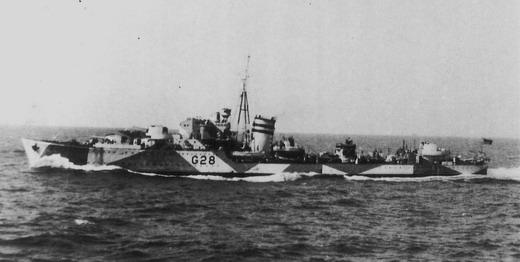
"We started refuelling on arrival, but we were ordered off again before it was complete. The army wished this enemy convoy to be destroyed at all costs, and so a force consisting of HM Ships “Aurora”, “Neptune”, “Penelope” and the destroyers “Lively”, “Lance”, “Havock” and ourselves were sent off to intercept the ships during darkness near Tripoli. We left Malta at high speed, and shortly before making contact with the enemy very near his coast, “Neptune”, who was leading the force, touched off a mine with one of her ‘sweeps’; shortly after this there was another explosion when presumably another mine was exploded the same way. In the meantime, the remainder of the force was steered clear away. “Neptune”, now while endeavouring to get out of the mine field by going ahead and astern on her port and starboard engines, touched off another mine under her stern blowing a portion of it off, rendering her immobile. There was a west-north-west wind blowing, causing her to drift to the eastward, and it was hoped that she would eventually get clear of the minefield; meanwhile we were patrolling in deep water to the eastward, and keeping in visual touch with the “Neptune”. About two hours later when she considered herself clear of the mines, she signalled that she was ready to be towed. We altered course at 0318 to close her and go alongside to tender any assistance required. As we were swinging to starboard with ‘rudder’ on, a mine exploded probably on our starboard propeller. This was quite bad enough, but the detonation caused our after magazine to explode as well, blowing the whole of the stern off up to the after tubes, and flooding the rest of it up to the Engine Rom after bulkhead. Forty minutes later "Neptune” drifted into yet another mine which damaged her amidships, and she turned over and slowly sank. Nothing further was seen of the ship or anything associated with her.
Meanwhile, we were in the sorry position of being surrounded with friends, but none of them could come to our assistance without unwarrantably endangering themselves. So with sinking hearts we witnessed their departure and they equally regretfully had to leave us and the “Neptune” to the tender mercies of the enemy and the elements.
Examination of the ship’s structure revealed that there was little reason why she should not float almost indefinitely, even though she had a sixteen degree list, as the structure forward of the Engine Room was sound as a bell. Though really it was a forlorn situation, as we were within fifteen miles of Tripoli, we had lost sixty good men in the initial explosion, the whaler had foundered and sunk with her crew due to holes made by the flying debris and blast of the explosion and our two remaining boats (the two motor cutters) were just as unseaworthy for the same reason.
The debris had come down a few seconds after the first crash sounding like all the Thunderbolts of Jove, as Depth Charges, Deck Plating, a Shell Hoist and every sort of solid object descended onto the ship from the height to which they had been hurled. One Depth Charge landed on the binnacle and glanced onto the First Lieutenant’s shoulder, cracking it and knocking him insensible, while the Shell Hoist of No. 3 Gun, weighing about 1½ tons arrived on the upper deck above No.2 Boiler Room. It killed one of the pom-pom’s crew and put the gun out of action. We were left with two 4.7” gun mountings, two point fives, and two Oerliken guns that could be used. A long oily trail stretched out from our open stern, and it was picked out with willow-the-wispish lights, which were probably calcium flares thrown from the No.3 Gun Deck. Meanwhile, the ship rapidly took on a sixteen degree list to starboard to the accompaniment of the port siren, which continued to wail crazily until the steam was shut off. In our favour were the darkness of the night, and the comparative calmness of the sea at this time.
The Doctor quickly attended to the wounded, and after the situation had been assessed the Captain ordered the destruction of confidential books, the jettisoning of unnecessary top weight, and the firing of three torpedoes capable of being discharged. Meanwhile, one of the two diesel dynamos, which had been running light, was run up to provide lighting between decks and in the machinery spaces, and the remaining engine room ratings were organised into watches to inspect the ship between decks, and to flash up No.1 Boiler periodically to provide steam for ejecting the water seeping into the hull. (The emergency method of pumping large quantities of water from the bilge was by steam through ejectors) Preparations were made to put the ship in a sinking condition in case this course should be necessary to prevent it falling into enemy hands. These preparations themselves allowed a certain amount of water to gain access to the ship, so it was all the more necessary to maintain steam to eject it, thus preventing further reduction of what buoyancy and stability remained.
When daylight came at last, everyone felt a little brighter, although the coast of Tripoli was in full view. There seemed a remote possibility that there might be some portion of propeller left that could be used to churn us a little further from that ominous coastline. So steam was put on the engines, and though the lubricating oil pumps (which were under water in the Gear Room) could not be made to heave, the engines turned alright. However, it was absolutely clear from the way they spun freely that there was no propulsion effect at all, so sadly we had to shut off steam for the last time, and resign ourselves to the Almighty.
The day was spent pulling out all the Mess tables, stools, and every wooden thing that might have buoyancy, and lashing them together into rafts, which were arrayed along the upper deck. The engine was lifted out of the “skimming disk” (small ships boat) and thrown over the side, not without some relish by the Motor Boat E.R.A. who now had a chance of getting his own back on this tiresome bit of machinery. The Engineer Officer and the Doctor spent some time provisioning and patching this boat. Empty drums were fitted as buoyancy tanks, and in the end it was really quite a serviceable lifesaving device. The acting First Lieutenant Milford-Haven then hoisted it onto the Torpedo Davit ready for lowering should it be needed. The Engine Room after bulkhead was shored at three weak spots, all watertight doors and hatches were opened. The Wireless (W/T) staff rigged jury (or makeshift) aerials and got their sets working again. The Canteen was thrown open and a plethora of sweets and cigarettes were issue by the indefatigable Eric, the Canteen Manager’s Assistant. During the afternoon there was a spasm, when the Engineer Officer found that the preparations to sink the ship had been almost too thorough in No.2 Boiler Room. The starboard main circulator weed trap cover, which was only secured by two screws had ‘sprung’, was belching water in all directions and the Boiler Room was about a quarter full. However, it was not too late to remedy this by applying another two screws and ejecting the water.
Throughout the day the Captain, Officers and Lookouts on the Bridge were constantly straining their eyes for any sign of things we 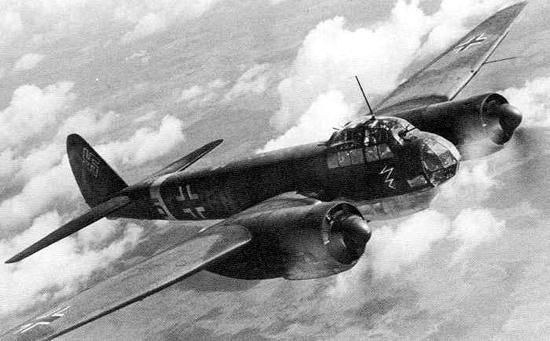 dreaded the most; enemy aircraft, submarines, or surface ships which, we expected, would deliver the “coup de grace”. The situation was slightly relieved by the plentiful supply of things to eat, while tea was produced from time to time by boiling up water from steam drains in the Boiler Room. While this was in progress there were constant alarms. dreaded the most; enemy aircraft, submarines, or surface ships which, we expected, would deliver the “coup de grace”. The situation was slightly relieved by the plentiful supply of things to eat, while tea was produced from time to time by boiling up water from steam drains in the Boiler Room. While this was in progress there were constant alarms. 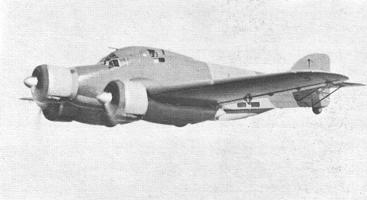 Imaginary smoke and aircraft were frequently seen by overstrained eyes, and everyone waited breathlessly until it was verified that they were not really there at all. Two enemy machines did arrive quite early in the day. The first, at about 0915, a Junkers JU88 (German bomber), flew around the ship at a height of two or three hundred feet, and then flew off again to the northwest. The second followed shortly at about 0945, a Savoya 79 (Italian bomber), that flew up from the south, circled the ship several times, and then flew back whence he came. Imaginary smoke and aircraft were frequently seen by overstrained eyes, and everyone waited breathlessly until it was verified that they were not really there at all. Two enemy machines did arrive quite early in the day. The first, at about 0915, a Junkers JU88 (German bomber), flew around the ship at a height of two or three hundred feet, and then flew off again to the northwest. The second followed shortly at about 0945, a Savoya 79 (Italian bomber), that flew up from the south, circled the ship several times, and then flew back whence he came. 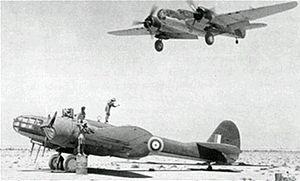 Finally, at about 1000, a friendly Maryland (RAF reconnaissance) flew round us with thumbs up, and sped away to the North. Shortly after this, a signal was transmitted to Malta, as there was no further object in maintaining W/T silence to avoid being located. There was a certain amount of difficulty in getting it through. The first signal was transmitted on Admiral’s wave, and was addressed to any British Man of War, and it read “Have been closed and inspected by reconnaissance aircraft. Am prepared to sink ship on arrival of enemy. My position……” No reply could be obtained to this signal, so a second message was transmitted on a different wavelength, “Am still afloat in position …. drift easterly about one knot”, and this was received. Some hours of waiting now ensued, during which several of our rafts, which had been put over the side on lanyards, frayed their ropes and drifted away into the blue. Finally, at about 1000, a friendly Maryland (RAF reconnaissance) flew round us with thumbs up, and sped away to the North. Shortly after this, a signal was transmitted to Malta, as there was no further object in maintaining W/T silence to avoid being located. There was a certain amount of difficulty in getting it through. The first signal was transmitted on Admiral’s wave, and was addressed to any British Man of War, and it read “Have been closed and inspected by reconnaissance aircraft. Am prepared to sink ship on arrival of enemy. My position……” No reply could be obtained to this signal, so a second message was transmitted on a different wavelength, “Am still afloat in position …. drift easterly about one knot”, and this was received. Some hours of waiting now ensued, during which several of our rafts, which had been put over the side on lanyards, frayed their ropes and drifted away into the blue.
At about 1500 the Captain read the burial service over the two men who had been killed by flying debris, and bodies were committed to the waves.
At 1600 a message was received from Malta, and was deciphered with difficulty, as the suitable de-coding tables had been destroyed when thrown over the side by mistake when the Captain’s order was misunderstood. When it was ultimately accomplished with the aid of Fleet Code, all hands were greatly cheered by the heartening information that “Jaguar”, our sister ship, who was built side by side with us at Denny’s Yard in Dumbarton, was coming to our rescue that night. We were adjoined to maintain strict W/T and V.S. (Visual signalling), silence for obvious reasons. It was really a marvellous feeling after the tension of the past hours, to feel that, if only we could hold out for the remaining few hours until nightfall, we would be safe, all being well. All hands perked up a lot, and tea was brewed, and the E.R.A.’s made some jam sandwiches. We were adjoined by the Captain not to put too much faith on the arrival of “Jaguar”, as there were so many possible ‘slips up’ that could occur. To begin with, the finding of any ship on the face of the ocean, when the distance between the seeker and the sought is great, is a problem that taxes the precision of any smart navigator. It is clear, that in this case, the problem was greatly aggravated by the fact that there was only a small bit of small ship derelict on the sea, and that in her extremity she had drifted an unknown distance (although this had already been estimated); also the rendezvous had to be made in inky blackness, with no chance of intercommunication. Of course, if the whole affair had been treated purely from the navigational point of view, there would have been so small a chance of success, that it would hardly have been worth undertaking, but the availability of a specially equipped aircraft made it practicable. When all these facts dawned upon one, the golden gleam of hope wilted a bit.
At sunset there was a bad spasm, when the Captain and Officers on the bridge thought they saw a funnel of smoke on the horizon. The Captain sent Milford-Haven and the Gunner (T) Mr Lenton up to the Crow’s nest, and they reported nothing visible. Surely, never can so many people have been so relieved to see the red disc of the sun fall below the horizon; for under the canopy of darkness lay our chances of escape from the enemy.
At 2230 the aircraft arrived (Wellington bomber fitted with rudimentary radar). First a drone that was just audible, then down he came and circled the ship, flying at two or three hundred feet. It was only a dimly discernible shadow, but how heartening even though there could be no communication between us. 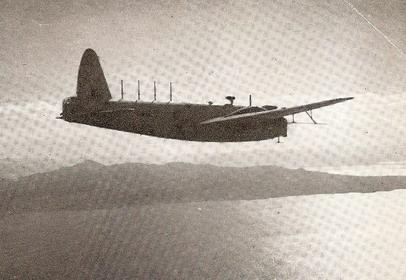 After two or three circuits, he vanished into the night, and was not seen again for an hour or two, when the same manoeuvre was repeated. Since sunset we had bedded ourselves down wherever possible. As many warm blankets as could be found were brought out, and used first to cover the four wounded, and then any other able bodied people who could get under them, who were not otherwise employed. We had hoped that the “Jaguar” would be able to tow us back to Malta, but this was only possible if she contacted us before 2230, as any hour later than this would have not left sufficient time to get reasonably clear of the enemy coastline before daylight. With so many units of the Italian Fleet at sea, and enemy air bases in the vicinity, it would have been a quite unwarrantable hazard for “Jaguar” to take. After two or three circuits, he vanished into the night, and was not seen again for an hour or two, when the same manoeuvre was repeated. Since sunset we had bedded ourselves down wherever possible. As many warm blankets as could be found were brought out, and used first to cover the four wounded, and then any other able bodied people who could get under them, who were not otherwise employed. We had hoped that the “Jaguar” would be able to tow us back to Malta, but this was only possible if she contacted us before 2230, as any hour later than this would have not left sufficient time to get reasonably clear of the enemy coastline before daylight. With so many units of the Italian Fleet at sea, and enemy air bases in the vicinity, it would have been a quite unwarrantable hazard for “Jaguar” to take.
At about 2300 a message was received from the aircraft that there were six enemy Motor Torpedo Boats seven miles to the southward, and it seemed clear that they were looking for us. The night was very dark fortunately, with no moon though the sky was clear with the stars shining brightly. The wind and sea were rising, and as a result our hopes were waning, from the point of view of remaining afloat, and the near certainty that the “E” boats would find us before the “Jaguar” arrived. This feeling was strengthened by an intercepted message addressed: "Base to Aircraft: Emergency" coupled with the non-appearance of the aircraft for some hours. This message could not be deciphered owing to the destruction of the appropriate decodes!
Time dragged by, and the wind and sea continued to rise. It was cold, and the soughing of the wind through the rigging made a depressing sound. Eventually, it seemed that there was no doubt that we must endeavour to drift for another day at least, as it was getting too near dawn for “Jaguar” to attempt the rescue. We reckoned that if we continued to drift at our then speed, and were left alone by the enemy, we should arrive at Benghazi about New Year’s Day. There was enough food and water with careful rationing. The idea of rigging some sort of sail had already been considered, but it had to be abandoned because all the canvas gear of the ship had been stored in the Tiller Flat, which was no more. (The stern had been blown off.)
The wind was now blowing force 5 or 6, and suddenly at about 0400 there was a resounding “tonk” at the after end of the ship, as a comber (a large rolling wave) coming up from almost dead astern struck the Engine Room after bulkhead. The ship reacted to this by gradually coming up onto an even keel, and appeared to be 'settling aft'. It was not possible to make a quick inspection of the Engine Room, as it was dark and the access hatches had for the first time in the ship’s history been battened down, and the 'darken ship' screens had been torn down for raft making. The hatches were very stiff, and were covered with huddled sailors, so the Engineer Officer reported to the Captain immediately, (with a view to inspecting the Engine Room subsequently), fearing the Engine Room after bulkhead had burst, and the ship would sink quickly. The Captain therefore ordered all hands onto the upper deck and prepared to abandon ship, and then made the signal to “Jaguar”, “Am Sinking”. Before inspecting the Engine Room, the Engineer Officer called for volunteers to ‘flash up’ No.1 Boiler again, and to start the steam ejectors on the No.2 Boiler Room bilges, as there seemed some chance that the ship might still remain afloat even with a flooded Engine Room, so long as No.2 Boiler Room remained dry. The voices of Stoker Petty Officers Harris and Yalland immediately volunteered out of the blackness, and a sentry was posted at the top of No.1 Boiler Room Air Lock, beneath which these men had to shut themselves, to give the alarm if the ship appeared to be about to take her final plunge. The Engine Room was not inspected and all turned out to be well, the ship having merely taken an opposite list, the after bulkhead still being perfectly sound. So the Captain cancelled his “Am Sinking” signal. While this alarm had been in progress, our aircraft had returned, and was still preserving its complete silence. Someone thought they saw a distant signalling lamp. Under the circumstances the Captain flashed at the aircraft, “Where is Jaguar?” and the reply was made in no uncertain manner on a signalling lantern from the aircraft. This exchange of signals disclosed the very near proximity of "Jaguar", but to ‘pin point’ us had been so difficult that if these signals had never been made, she might not have found us. As it was, things now (0430) proceeded to move rapidly.
With expert handling “Jaguar” appeared, a dark shape out of the blackness, and tried to move alongside port bow to port bow; but it was soon very clear from the considerable motion of the two ships, that this manoeuvre, although very well executed, would severely damage “Jaguar”. 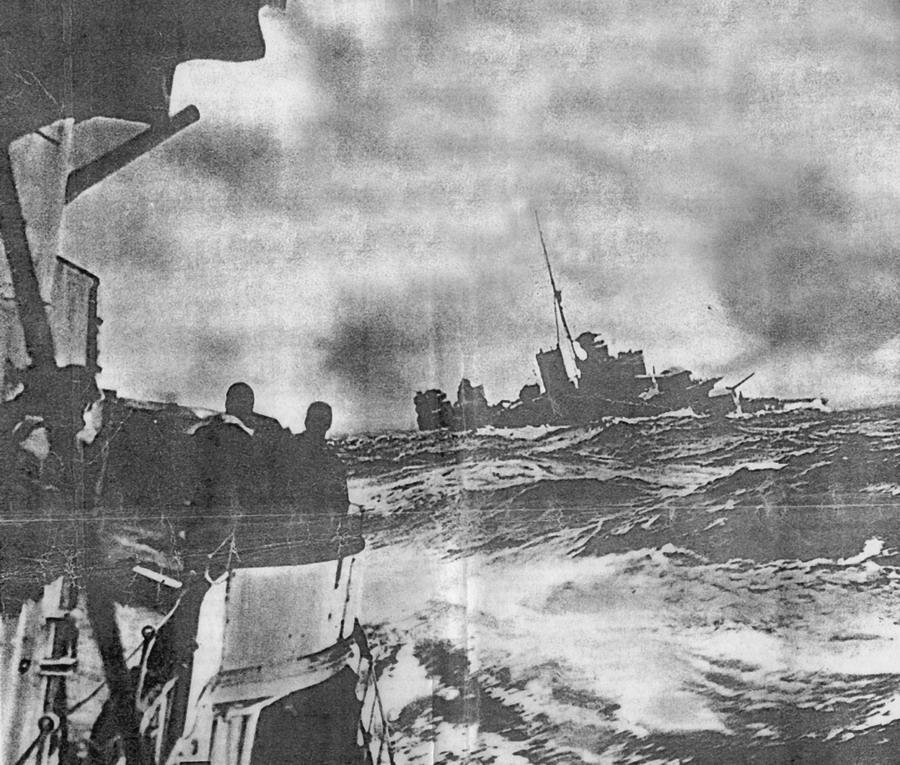 About fifty men had jumped across on its first contact, many others hurling suitcases onto “Jaguar’s” forecastle. The Captain signalled, “Intend to abandon and sink ship. Lie to windward to pick up survivors. Leave not later that 0530”. (Photo taken illegally before dawn by a member of Jaguar's crew from a position aft of her bridge. Kandahar is seen with her stern blown off and her bows only just clear of the water.) About fifty men had jumped across on its first contact, many others hurling suitcases onto “Jaguar’s” forecastle. The Captain signalled, “Intend to abandon and sink ship. Lie to windward to pick up survivors. Leave not later that 0530”. (Photo taken illegally before dawn by a member of Jaguar's crew from a position aft of her bridge. Kandahar is seen with her stern blown off and her bows only just clear of the water.)
“Jaguar” now went off to windward, and took up a position on our starboard quarter about four hundred yards distant. Meanwhile the Captain gave orders to abandon ship and to swim to “Jaguar” and to sink the ship. This had to be done mechanically 'down below', as to have used 'charges' would have jeopardised the lives of men in the water. The ERA’s went down below in pairs to each Boiler room and the Engine room, and put into effect the previously arranged drill, and the Engineer Officer opened the flooding valves and sea cocks to the forward magazines and shell rooms. The Engine room and Boiler rooms were inspected before the ship was abandoned and a good flow of water was seen to be coming in. It was estimated that she would sink in about twenty minutes. During this the Medical Officer had succeeded in getting the wounded, including the First Lieutenant, into the one remaining Carley float, and together with two other officers had paddled them to “Jaguar” where they were safely disembarked. All other hands except three had now abandoned and were swimming through fairly cold and heavy sea (the temperature being 620F) to our rescuers, all of course having lifebelts. The three remaining hands were found by the Captain and Engineer Officer on the port side still trying to launch a raft as they were non swimmers. They were however dissuaded from this fruitless attempt, and exhorted to take to the water, as they all had lifebelts, and would more easily make the journey to “Jaguar” in them than they could possibly have done against the wind on a ramshackle raft. Satisfied that all the remaining ships company were now clear of “Kandahar”, the Captain and Engineer Officer now left the ship. The time must now have been about 0525.
When “Jaguar” had collected every man that could be found, she fired a torpedo into “Kandahar”, as she had not completely foundered; and the Captain propped up on “Jaguar’s” bridge, saluted this grand little ship, the veteran of two years and two months of war service during which a hundred and sixty thousand miles had been covered; as she slid sternwards beneath the waves to her last resting place one hundred fathoms deep.
The survivors, warmed by the great hospitality and blankets of our rescuers, had their first sleep after three almost sleepless nights, while they were transported to what had seemed an almost unthinkable haven of delight a few hours earlier – Malta.
Surviving officers
Commander WGA Robson, D.S.O., D.S.C. RN,
Lieutenant Commander RGR Clay, RN
Lieutenant The Marquis of Milford Haven RN
Lieutenant RA Cunis, RNVR
Sub Lieutenant MJ Hunter, D.S.C. RN
Lieutenant Commander (E) CR Havergal, D.S.C. RN (Engineer Officer)
Warrant Officer JMS Lenton, D.S.C. RN (The Gunner)
Surgeon Lieutenant D.M. Armstrong, RNVR (Medical Officer)
Missing officers
Sub Lieutenant MR Gibson-Watt D.S.C. RN Killed while at No.3 Gun in initial explosion.
Midshipman LJ Tatum, Royal Australian Navy. Lost with the whaler’s crew when, during an attempt to bring the boat from its falls on the starboard side to the port side of the ship, it foundered due to explosion damage.
| Surviving officers & men |
176 |
| Killed in explosion |
60 |
| Lost with whaler's crew |
6 |
| Lost during rescue operations |
7 |
JOHN McGREGOR
CHAIRMAN NEPTUNE ASSOCIATION
(representing Neptune and Kandahar)
© 2002-2018 The Neptune Association, Registered Charity No 1103413. |


 dreaded the most; enemy aircraft, submarines, or surface ships which, we expected, would deliver the “coup de grace”. The situation was slightly relieved by the plentiful supply of things to eat, while tea was produced from time to time by boiling up water from steam drains in the Boiler Room. While this was in progress there were constant alarms.
dreaded the most; enemy aircraft, submarines, or surface ships which, we expected, would deliver the “coup de grace”. The situation was slightly relieved by the plentiful supply of things to eat, while tea was produced from time to time by boiling up water from steam drains in the Boiler Room. While this was in progress there were constant alarms.  Imaginary smoke and aircraft were frequently seen by overstrained eyes, and everyone waited breathlessly until it was verified that they were not really there at all. Two enemy machines did arrive quite early in the day. The first, at about 0915, a Junkers JU88 (German bomber), flew around the ship at a height of two or three hundred feet, and then flew off again to the northwest. The second followed shortly at about 0945, a Savoya 79 (Italian bomber), that flew up from the south, circled the ship several times, and then flew back whence he came.
Imaginary smoke and aircraft were frequently seen by overstrained eyes, and everyone waited breathlessly until it was verified that they were not really there at all. Two enemy machines did arrive quite early in the day. The first, at about 0915, a Junkers JU88 (German bomber), flew around the ship at a height of two or three hundred feet, and then flew off again to the northwest. The second followed shortly at about 0945, a Savoya 79 (Italian bomber), that flew up from the south, circled the ship several times, and then flew back whence he came.  Finally, at about 1000, a friendly Maryland (RAF reconnaissance) flew round us with thumbs up, and sped away to the North. Shortly after this, a signal was transmitted to Malta, as there was no further object in maintaining W/T silence to avoid being located. There was a certain amount of difficulty in getting it through. The first signal was transmitted on Admiral’s wave, and was addressed to any British Man of War, and it read “Have been closed and inspected by reconnaissance aircraft. Am prepared to sink ship on arrival of enemy. My position……” No reply could be obtained to this signal, so a second message was transmitted on a different wavelength, “Am still afloat in position …. drift easterly about one knot”, and this was received. Some hours of waiting now ensued, during which several of our rafts, which had been put over the side on lanyards, frayed their ropes and drifted away into the blue.
Finally, at about 1000, a friendly Maryland (RAF reconnaissance) flew round us with thumbs up, and sped away to the North. Shortly after this, a signal was transmitted to Malta, as there was no further object in maintaining W/T silence to avoid being located. There was a certain amount of difficulty in getting it through. The first signal was transmitted on Admiral’s wave, and was addressed to any British Man of War, and it read “Have been closed and inspected by reconnaissance aircraft. Am prepared to sink ship on arrival of enemy. My position……” No reply could be obtained to this signal, so a second message was transmitted on a different wavelength, “Am still afloat in position …. drift easterly about one knot”, and this was received. Some hours of waiting now ensued, during which several of our rafts, which had been put over the side on lanyards, frayed their ropes and drifted away into the blue. After two or three circuits, he vanished into the night, and was not seen again for an hour or two, when the same manoeuvre was repeated. Since sunset we had bedded ourselves down wherever possible. As many warm blankets as could be found were brought out, and used first to cover the four wounded, and then any other able bodied people who could get under them, who were not otherwise employed. We had hoped that the “Jaguar” would be able to tow us back to Malta, but this was only possible if she contacted us before 2230, as any hour later than this would have not left sufficient time to get reasonably clear of the enemy coastline before daylight. With so many units of the Italian Fleet at sea, and enemy air bases in the vicinity, it would have been a quite unwarrantable hazard for “Jaguar” to take.
After two or three circuits, he vanished into the night, and was not seen again for an hour or two, when the same manoeuvre was repeated. Since sunset we had bedded ourselves down wherever possible. As many warm blankets as could be found were brought out, and used first to cover the four wounded, and then any other able bodied people who could get under them, who were not otherwise employed. We had hoped that the “Jaguar” would be able to tow us back to Malta, but this was only possible if she contacted us before 2230, as any hour later than this would have not left sufficient time to get reasonably clear of the enemy coastline before daylight. With so many units of the Italian Fleet at sea, and enemy air bases in the vicinity, it would have been a quite unwarrantable hazard for “Jaguar” to take. About fifty men had jumped across on its first contact, many others hurling suitcases onto “Jaguar’s” forecastle. The Captain signalled, “Intend to abandon and sink ship. Lie to windward to pick up survivors. Leave not later that 0530”. (Photo taken illegally before dawn by a member of Jaguar's crew from a position aft of her bridge. Kandahar is seen with her stern blown off and her bows only just clear of the water.)
About fifty men had jumped across on its first contact, many others hurling suitcases onto “Jaguar’s” forecastle. The Captain signalled, “Intend to abandon and sink ship. Lie to windward to pick up survivors. Leave not later that 0530”. (Photo taken illegally before dawn by a member of Jaguar's crew from a position aft of her bridge. Kandahar is seen with her stern blown off and her bows only just clear of the water.)